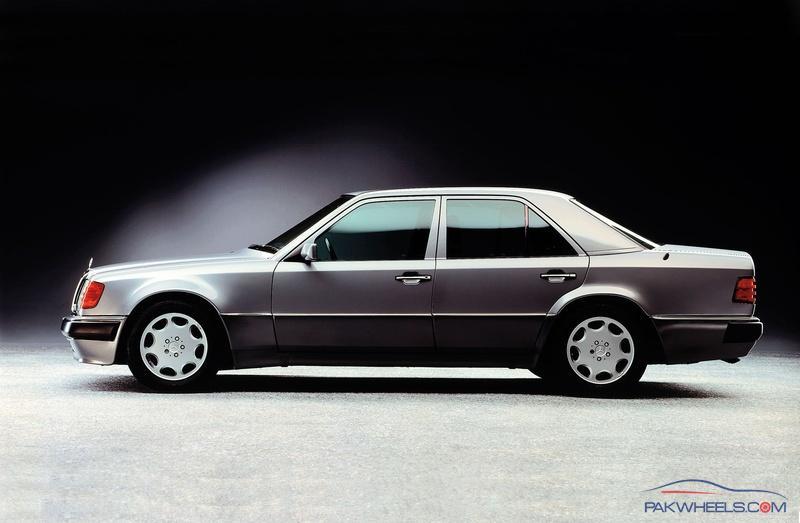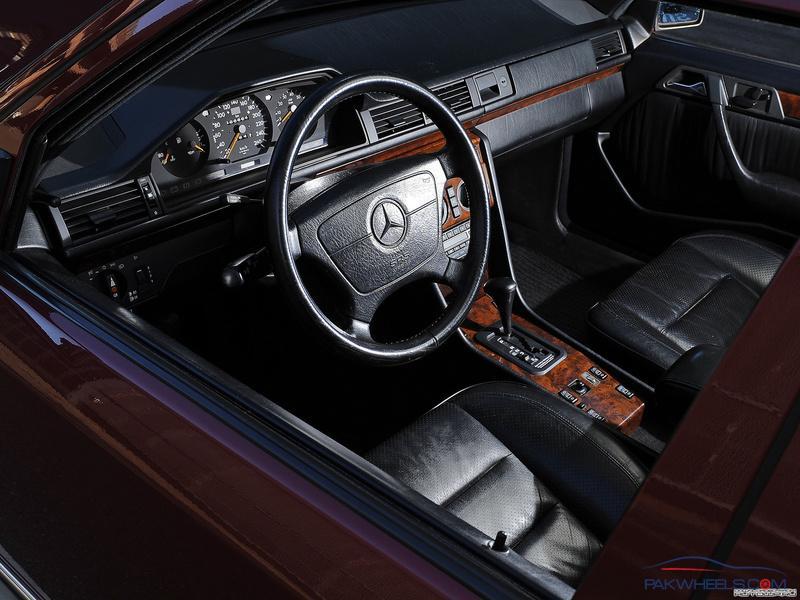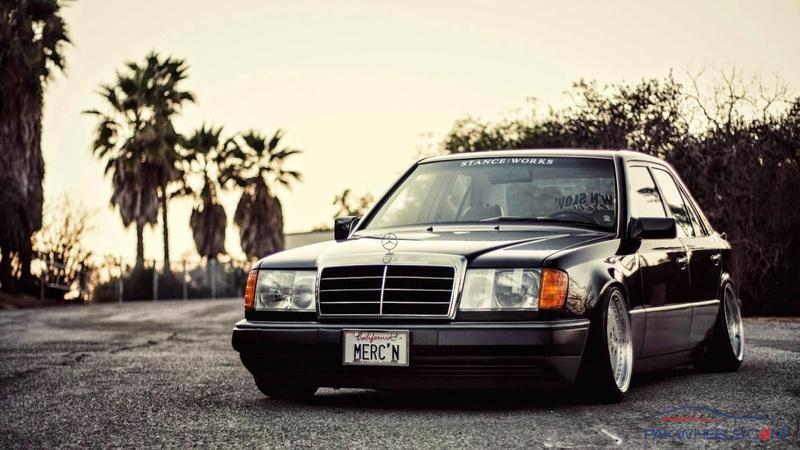Mercedes W124 - A LEGEND!
is the Mercedes-Benz internal chassis-designation for the 1984 to 1995/96 version of the Mercedes-Benz E-Class, as well as the first generation to be officially referred to as E-Class. The W124 models replaced the W123 models after 1984 and were succeeded by the W210 E-Class after 1995. (Wikipedia)
A total of 2,562,143units were manufactured- making it a success!
The powertrain choices included:
Petrol: M102; M103; M104; M111; M119.
Diesel: OM601; OM602; OM603; OM605; OM606.
Wheel Base:
Sedan & Wagon: 110.2 in (2,799 mm)
Coup?: 106.9 in (2,715 mm)
Limo: 141.7 in (3,599 mm)
Please share your enthusiasm about the this legendary automotive icon with us in this thread.
Hope all of us will enjoy the discussion!




W124 Buyer's Guide
As with any Mercedes-Benz, the vehicle's history is important. Regular service and maintenance are crucial, and given this, a W124 should have a long life. Major mechanical components are long lasting. All engines in these models are capable of surviving to huge mileages in typically Mercedes fashion.
Whilst all these engines are long lasting with bottom end work being almost unheard of, there are a few issues to be aware of. All petrol versions can suffer head gasket problems although it is most common on the sixes and least common on the 16-valve fours. The failure of the gasket is not usually a compression failure and therefore does not affect the way the engine runs. Instead, engine oil usually finds its way into the coolant, becoming visible when it floats to the highest point in the coolant reservoir. An external oil leak from the head gasket at the rear, exhaust side of the engine often precedes the appearance of oil in the coolant, particularly on the M103 and M104. Head gasket replacement is not particularly difficult but the labour time can make up much of the cost involved. Replacement head gaskets have undergone design changes that help prevent failures. Good maintenance of the cooling system, including frequent renewal of the coolant (I believe more frequently than the recommended 3-yearly) with the correct coolant (identified by its blue colour), can help prevent head gasket corrosion and failure. At the very least, valve stem oil seals should be replaced and possibly also valve guides (on early or high mileage engines) whilst the cylinder head is off the engine. Obviously the head should also be checked for flatness and machined if necessary.
The M103 and M104 are also known for oil leaks from the timing cover at the front of the engine. Again, not a difficult repair and one that can occur separately or as part of a head gasket replacement. High mileage M102s and M103s may also require inexpensive replacement of the hydraulic valve lash adjusters (lifters) should they continue to "tick" after oil pressure rises (brief ticking before oil pressure rises is no cause for concern). Early M102s used a single row timing chain which requires periodic replacement, as failure results in severe engine damage. Later M102s changed to a double row chain which offers a much longer life. The M103, M104 and M111 all offer long chain life, despite the M103 using a single row chain. A cosmetic issue with many engines is the failure of the coating on the valve covers, particularly the earlier models with a black finish. The coating is required as the valve covers are a lightweight magnesium alloy. M102 valve covers can also distort resulting in oil leaks from the gasket and late versions of this engine have a plastic oil separator under the valve cover which can become brittle and crack with age. Apart from these issues, the engines themselves are very reliable. So long as regular oil and filter changes have been performed, the engine should be clean internally and an oil pressure of above about 1 bar at hot idle that rises to 3 bar when driving would tend to indicate good mechanical condition.
Most other engine work involves normal maintenance items and ancillary equipment. All models used a "serpentine" poly-vee belt. This belt is long lasting, however the automatic tensioner can fail, usually after being disturbed during belt replacement. The bushes in the associated damper can also wear causing a rattle at the front of the engine. Plastic components in the cooling system (eg. radiator tanks and coolant reservoir) will become brittle with age resulting in eventual failure. If the original plastic thermostat housing is still fitted, it is recommended that a replacement alloy one be fitted. Coolant pumps (water pumps) can fail, usually preceded by coolant leakage. Observance of the temperature gauge can reveal other problems with engine cooling such as thermostats, fan clutches and temperature switches for the fans. Coolant temperature should run between about 85 and 95 degrees centigrade except in very hot ambient conditions or when stationary (such as in heavy traffic) when temperatures of up to about 105 degrees are considered normal.
All fuel injected W201 models and pre 1993 fuel injected W124 models (ie. most M102, all M103 and 3 litre M104 engines) utilised proven Bosch continuous fuel injection. On all but the earliest M102, this was K-E (CIS-E) Jetronic. Generally this system is reliable and also offers the advantage that it can continue to function with a failure of (or loss of electrical supply to) the electronics, albeit with difficult cold starting and reduced efficiency. On the occasion that a problem does occur with the fuel injection, expert advice is recommended to ensure a fast solution to the problem. The K-E system is not always fully understood by those attempting to diagnose faults and incorrect diagnosis can lead to ongoing frustration. Faults associated with the K-E injection system are usually electrical and can include a faulty over-voltage protection (OVP) relay, fuel pump relay, electro-hydraulic actuator (EHA), potentiometer on the fuel distributor and the idle control valve. Symptoms of faults with these items can include difficult cold starting, poor idle speed control or intermittent stalling. Rough idling can also be caused by hoses in the idle air circuit which have become hard or cracked with age. Ignition systems on the K-E injected engines were by a separate EZL electronic ignition module (which includes electronic control of ignition advance), a single ignition coil and high voltage distributor. This system is usually reliable.
Late (1993 onwards) petrol W124 models (ie. M111 and late M104) utilised fully electronic Bosch HFM sequential fuel injection. The ignition system was integrated with the fuel injection ECU and the high voltage distributor was no longer required due to the use of a separate ignition coil for each pair of spark plugs. This system is generally reliable apart from problems associated faulty wiring harnesses which have become evident in recent years. Driveability and poor running problems can often only be addressed with the complete replacement of the engine wiring harness. The M104 engines (280 and 320 models) were the worst affected, however it appears that any Mercedes manufactured in 1993, '94 and '95 can suffer from this problem. An inspection of the wiring where it is most exposed to heat (eg. near ignition coils within recess in valve cover) will reveal brittle and crumbling insulation on affected cars. Replacement of the harness only takes a few hours, however the harness is expensive to purchase. A faulty harness should be replaced as in a few instances the ECU has suffered damage necessitating expensive replacement. Faulty spark plug suppressor boots can also cause poor running on these engines. Serious misfiring will result in the ECU shutting down the fuel injectors on the affected cylinder(s) to prevent damage to the exhaustcatalytic converter.
All engines rely on the supply of clean air and fuel so routine replacement of filters is important. Fuel pumps are typical of those which have been used on injected Mercedes vehicles for many years and many W124 models use two pumps. The pumps can become unreliable or fail on high mileage cars with noisy operation being an early warning sign.
Exhaust systems give a long life and it would not be unusual to see many of these models still running with the original system. The fluid-filled engine mounts which provide good isolation from engine vibration will require occasional replacement. Sometimes, what appears to be a rough idle, is actually caused by faulty engine mounts. Vibration under hard acceleration and backlash in the driveline can be caused by worn flexible couplings on the tail shaft.
Automatic transmissions last well, but will usually require attention at some time during the life of the vehicle. They are perhaps not quite as durable as the 3-speed automatics in the W107 and W116 V8 models of the 1970s. The 5-speed automatics in W124 coupes from 1990 onwards (300CE-24, 320CE and E320) have a reputation of being the least durable of all. In some overseas markets these coupes had the standard 4-speed automatic (as fitted to the sedans) and some local coupes have been retrofitted with the 4-speed due to the cost to overhaul the 5-speed. This is a pity as the 5-speed auto gives the coupes strong acceleration from a standing start combined with a tall overdrive for effortless and economical cruising. Manual transmissions were rare. These are not known to be troublesome and clutches are also reasonably reliable apart from occasional hydraulic problems with age.
Front suspension is a fairly simple lower control arm with shock absorber (damper) strut and separate spring setup. It is durable and requires little more than occasional replacement of inexpensive strut upper mounts or anti-roll (sway) bar bushes. Steering was traditional Mercedes power assisted, recirculating ball. As with any Mercedes, the drag link, tie-rod ends and steering damper may need occasional replacement. The W201 introduced the now standard five link rear suspension and the W124 continued with it. This allowed for previously unattainable ride and road holding. Due to the added complexity of this suspension, there are numerous bushes that can wear after high mileage. Wear is characterised by a tendency for the car to wander or steer in the rear. W124 wagons and W201 16-valve versions have hydro-pneumatic, self-levelling rear suspension. As with the same system on earlier W116, W123 and W126 models, the accumulators (air or nitrogen cells) tend to fail every 10 to 15 years. They are neither difficult nor very expensive to replace. Shock absorbers are of a high quality and give long service. Brakes (which include ABS on all but the 1.8 litre and earliest W201) are strong and reliable.
Normally when discussing what to look for in a used Mercedes (particularly a model such as a W107), I would put the greatest emphasis on body condition and a lack of rust. With the W201 and even more so the W124, rust is virtually unheard of. A lack of accident damage or correct repair of any such damage is obviously important. Rust is unlikely to be a serious issue with either the W124 or W201. Paint quality is superb and even early models that have been well maintained will still have good paint finish.
Interiors are considered to be very durable, particularly in the W124. Most cars had either MB-Tex (vinyl) or leather upholstery, with only some getting cloth seats. Leather was popular and lasts well and cars with MB-Tex should have interiors that still look like new. Perhaps the least durable of parts of the interiors were those areas most exposed to sunlight. Tops of dashboards can crack although it is not very common. The capping along the tops of the doors, particularly in the W201 can shrink and pull back from the edges. Blue seems to be the worst colour for this problem. Another common defect that comes with age is that of surface cracks in the high gloss finish on the timber, mainly on the centre console around the gear shifter. Apart from the occasional leather or vinyl squeak, the interiors remain quiet and free from rattles. The gas pressure struts which hold the tailgate open on the wagons will eventually lose the ability to do so due to loss of gas charge.
Electrical and electronic faults are not confined to the engine. Cruise controls can develop intermittent or permanent faults, usually due to failing solder joints in the cruise control amplifier. Power window regulators and switches can give problems as can switches for power seat adjustment. Wiring harnesses running into to the doors (and tailgate on wagons) can fatigue and break due to constant flexing. Ignition locks can wear to the point where they cannot be used, a problem that is not unique to these models. Early warning signs of difficult operation of the ignition key should be observed and the lock replaced before it fails completely. Replacement is not difficult whilst the lock can still be operated, however if the lock fails it will need the services of a locksmith.
Air conditioners are probably no less reliable than for other cars however some evaporators have been known to develop leaks resulting in a loss of refrigerant. On the W124 replacement is a very time consuming job. Few if any W124s or W201s got the optional fully automatic (push button) climate control system which is just as well, as this system which was standard fitment on North American deliveries has proven unreliable with age. This system uses a small air-sampling blower to draw air across the interior temperature sensor located near the front interior light. A hose runs down the windscreen pillar to the blower which is located behind the glove box and noises emanating from this area can be from a worn blower. The main blower for the heating and air conditioning can also develop squeaks with age.
All these faults and problems may sound daunting, however it is highly unlikely that any one car would ever suffer from all these problems and many may never suffer from the majority of listed faults. Many of the issues mentioned will only affect a very small percentage of cars. I have simply attempted to cover as many of the faults that I am aware of that can affect the W124. It is probably fair to argue that these models are not quite as reliable as the older W123 series (which many believe to be the most reliable Mercedes of all) but they are more complex cars that offer a better driving experience. Some of the problems occur in additional features and equipment that was not available on the older models. Likewise, some argue that the W210 (which replaced the W124), and the W202 (which replaced the W201), do not offer the durability of the W124 or W201.
Choose wisely when buying a used W124 or W201, maintain it well, and I am sure that you too will be very satisfied with your car.
Source: benzworld.org